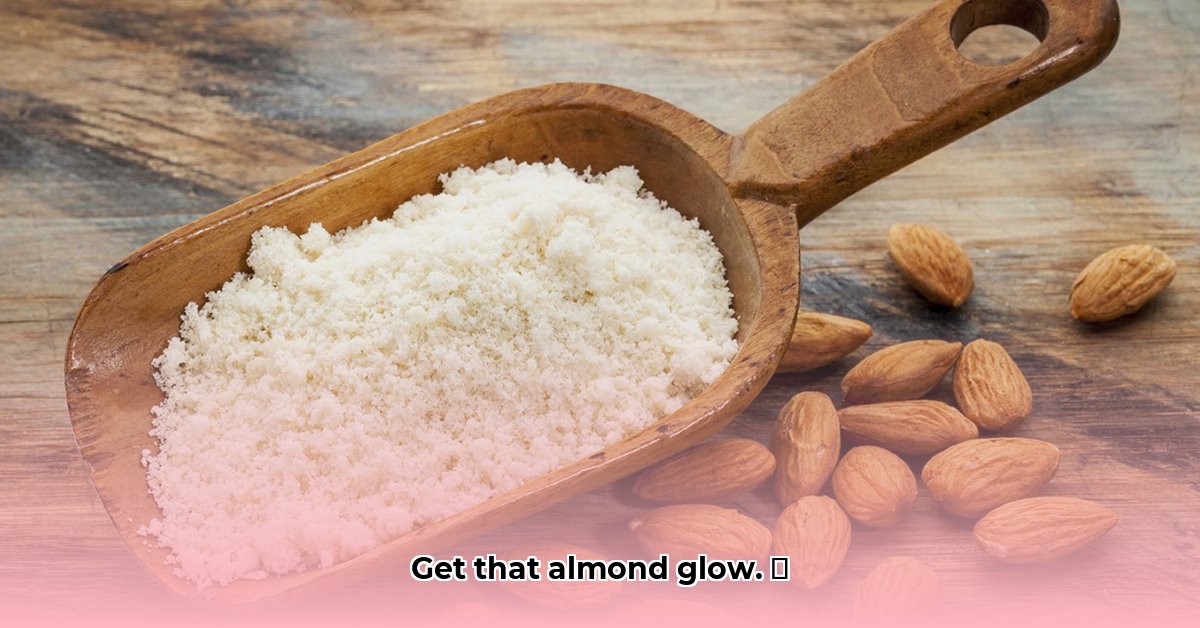Got almond skin? Let’s get you glowing! This guide is your complete roadmap to healthy, radiant skin. We’ll break down everything you need to know about your unique skin tone, from understanding its special features to mastering the perfect skincare and makeup routine. We’ll walk you through creating a personalized skincare plan, choosing the right makeup shades, and handling any hyperpigmentation. For more in-depth information, check out this [comprehensive guide](https://happilylive.com/almond-skin-tone/). Get ready for tips, tricks, and product recommendations – all backed by experts and real-life experiences from people just like you. Let’s unlock the secrets to your most beautiful skin yet!
Almond Skin Tone: Your Guide to Radiant Skin
Almond skin—that warm, medium-to-light brown complexion—is celebrated for its versatility and natural radiance. Let’s explore the unique aspects of this beautiful skin tone and how to best care for it, ensuring it glows with health and vitality.
Decoding Your Almond Skin: It’s More Than Just Brown
First things first: what exactly is almond skin? It’s generally a medium-to-light brown, often described as having warm undertones like golden or olive hues. These warm undertones give the skin a natural, sun-kissed appearance. However, you might find yourself with cooler undertones—think hints of pink, red, or blue. This wide range is what makes it so fascinating! Knowing your specific undertones is crucial for choosing the right skincare and makeup products for your unique needs. Think of it like this: knowing your undertones is your secret weapon to unlocking radiant skin. Understanding the nuances of your skin’s undertones helps in achieving a flawless complexion. People with almond skin tones often find their skin tans easily and rarely burns, making sun protection even more critical.
Your Personalized Skincare Routine: A Step-by-Step Plan
Sun protection is crucial for all skin types, but especially for almond skin, which can be more prone to dark spots (hyperpigmentation). This isn’t just about preventing sunburn; it’s about preserving your skin’s health and preventing premature aging. Here’s a simple, yet effective routine:
- The Gentle Cleanse: Start and end your day by gently cleansing your face with a mild, hydrating cleanser. Look for one labeled “non-comedogenic” and sulfate-free to avoid clogging pores or stripping your skin of its natural oils.
- Targeted Treatment: Next, apply a serum. Ingredients like niacinamide (great for reducing redness, minimizing pores, and evening skin tone) or vitamin C (a powerful antioxidant that brightens and protects against sun damage) are excellent choices. Hyaluronic acid is another great addition to provide additional hydration.
- Hydration is Key: Follow up with a lightweight moisturizer to keep your skin feeling soft and supple. Choose a formula that suits your skin type (oily, dry, combination). Look for ingredients like ceramides and glycerin to help maintain the skin’s natural barrier.
- The Sunscreen Shield: This is the most important step! Apply a broad-spectrum sunscreen with an SPF of 30 or higher every morning, even on cloudy days. Reapply every two hours, especially if you’re sweating or swimming. Mineral sunscreens (zinc oxide or titanium dioxide) are often a good choice for sensitive skin.
Did you know that consistent sunscreen use can reduce the risk of hyperpigmentation by up to 80%? Also, incorporating antioxidants into your routine can further shield your skin from environmental damage.
Makeup Magic: Enhancing Your Natural Beauty
Makeup can enhance your natural beauty and help you feel confident. Here’s how to choose the perfect shades:
- Foundation Match: If you have warm almond skin, look for foundations with yellow or golden undertones. Cooler undertones? Opt for foundations with pink or neutral hues. The best way to find your perfect match is to test a few shades on your jawline in natural light. Ensure the foundation blends seamlessly with your skin both indoors and outdoors.
- Blush and Bronzer Glow: Experiment with peach, coral, or bronze shades – these often complement almond skin beautifully. These shades enhance the skin’s natural warmth and provide a healthy, radiant look.
- Highlight Your Radiance: A subtle highlighter can add a gorgeous, natural-looking glow. Apply highlighter to the high points of your face, such as cheekbones, brow bones, and the bridge of your nose.
Tackling Hyperpigmentation: Prevention and Treatment
Dark spots and uneven skin tone are common concerns. Prevention is always better than cure, which is why consistent sunscreen use is so important. If you’re already dealing with hyperpigmentation, here are some options to consider:
Topical Treatments: Some effective options include retinoids (boost cell turnover), hydroquinone (lightens dark spots), kojic acid, and azelaic acid (reduces inflammation and hyperpigmentation). However, it’s extremely important to consult a dermatologist before starting any new topical treatment—they can help you determine the best approach and dosage for your specific skin type and concerns.
Professional Treatments: Chemical peels and laser treatments may provide more dramatic results. These treatments can be very effective, but they can also have side effects or require significant downtime for recovery. A consultation with a dermatologist is crucial to determine suitability. Again, a dermatologist is your best resource here.
Natural Remedies: Ingredients like aloe vera, licorice root extract, and green tea extract have shown promise in reducing hyperpigmentation. These can be found in various skincare products and offer a gentler approach.
Remember, treating hyperpigmentation takes time and patience. You’re not going to see results overnight, so be patient and consistent. It’s also important to avoid picking at blemishes, as this can worsen hyperpigmentation.
Product Recommendations: A Starting Point
The beauty market is vast, so it’s easy to feel overwhelmed. Always do a patch test on a small area of skin before applying a new product to your entire face. Look for products specifically formulated for your skin type and concerns. Consider fragrance-free options to minimize irritation. A dermatologist can offer personalized recommendations to help you navigate the options.
Almond Skin in the Media: A Reflection of Our World
How the media portrays almond skin influences how we see ourselves and each other. Positive and accurate representation builds confidence and self-acceptance. However, underrepresentation or stereotypical portrayals can have a negative impact. Ideally, the media should reflect the beauty and diversity of almond skin in a genuine and inclusive manner. Ongoing research continues to explore this complex interplay between media representation and self-esteem in diverse communities. There’s still much to learn about the long-term effects of media portrayal. It’s important to support media outlets that promote inclusivity and diversity.
Best Hyperpigmentation Treatments for Almond Skin Tones
Almond skin, with its warm, olive undertones, presents unique challenges and rewards when it comes to hyperpigmentation. Understanding your skin’s specific needs is key to achieving a radiant, even complexion. Let’s explore how to tackle those pesky dark spots.
Key Takeaways:
- Almond skin tones often exhibit a unique sensitivity to certain treatments.
- Prevention is paramount; consistent sun protection is non-negotiable.
- A multi-pronged approach combining topical treatments, lifestyle changes, and, in some cases, professional procedures yields the best results. It’s also essential to incorporate antioxidants into your diet and skincare routine to combat free radical damage.
Understanding Your Almond Skin
Almond skin, often falling within Fitzpatrick skin types III-IV, requires a gentler yet effective approach to hyperpigmentation treatment. Its higher melanin concentration means it’s more prone to post-inflammatory hyperpigmentation (PIH), meaning dark spots can easily develop after breakouts or irritation. This predisposition impacts treatment choice and management of dark spots. Understanding these factors allows for a tailored approach to skincare.
Building Your Skincare Routine: A Step-by-Step Guide
Creating a consistent skincare routine for almond skin targeting hyperpigmentation is crucial. Here’s what you should incorporate:
- Gentle Cleansing: Use a mild, non-comedogenic, and sulfate-free cleanser to avoid irritation. Avoid harsh scrubbing.
- Targeted Treatments: Introduce serums containing effective ingredients:
- Vitamin C: Powerful antioxidant, brightens skin, and protects against environmental damage.
- Niacinamide: Reduces inflammation, minimizes pores, and evens skin tone.
- Retinoids (with caution): Exfoliates, improves skin texture (start with low concentration, use at night).
- Alpha Arbutin: Lightens dark spots by inhibiting melanin production.
- Tranexamic acid: Effective for melasma. Consult your dermatologist.
- Moisturization: Choose a moisturizer suited to your skin type to keep your skin hydrated and healthy. Look for ingredients like hyaluronic acid and ceramides to maintain moisture.
- Sunscreen (Broad Spectrum, SPF 30+): The most critical step! Daily application prevents further hyperpigmentation. Reapply every two hours, especially after swimming or sweating. Find a formula you love; without consistent sunscreen use, other treatments are less effective.
Makeup Application for Almond Skin
Choosing the right makeup can enhance your complexion and even out skin tone. Look for foundations with a natural finish that matches your undertones.
- Foundation Match: Avoid foundations that are too light or too ashy. Test shades in natural light to ensure a seamless blend.
- Concealer Strategy: Apply concealer sparingly to target dark spots only. Use
- Plant-based Diet Colitis Remission: Success Stories - December 18, 2025
- Plant Based Diet Breast Cancer: Research-Based Benefits - December 16, 2025
- Plant-Based Diet Ulcerative Colitis Remission: Proven Benefits - December 15, 2025










